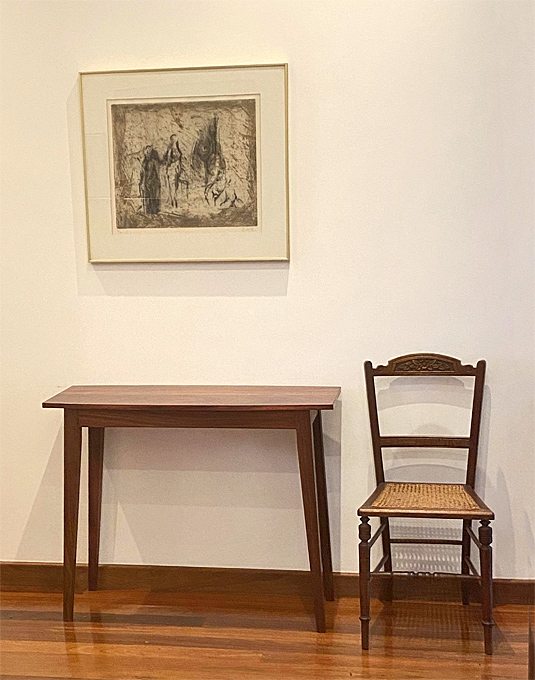Mike Kreinhop posted a superior parallel guide for his SCM Minimax SC2 Classic using the Incra LS-25 positioner ...
Fantastic - I would love to have this - but the Incra positioner in Australia costs well over $1000. So not just yet.
About a month or so ago I posted a few pictures of my simple version, which was made from laminated Merbau strips (cheaper and better than any ply locally), clamped to the wagon, and featuring an adjustable fence ...
This fixture is 1200mm long and 300mm wide (the size of the wagon in front of the crosscut fence). My only complaint is that it lies on top and this removes 18mm (3/4") from the depth of cut available (the blade is 305mm/12"). An advantage of Mike's parallel guide is that it lies flat on the wagon. My version works so well, however, that I am able to suppress the desire to build another one .... well, that is what I tell myself for now
Why not make it wider? Or longer?
Well, I really do not need anything wider. I only work with solid wood, never sheet goods. This can rip 12" wide boards.
I do at times rip longer than 1250, but that is not needed for this fixture - if I need to rip long, then one just uses the rip fence, which has JessEm Clearcut Guides. Most of the time I dock rough sawn boards to approximate length before dimensioning them.
The purpose of this fixture is to rip shorter lengths, especially safely rip very narrow sections, as well as taper legs accurately and repeatedly to the same dimensions.
In a recent build I used a Fritz & Franz jig to first square one side of a rough sawn Hard Maple board ....
... and then rip this for legs ...
Note: sawing to a specific width can be done in two ways: either use the rip fence as a depth stop, or use a set of stops on the crosscut fences (F&F) or the parallel guide as a stop.
I could see that there is the potential for the parallel guide fixture to combine all the best features of the F&F, and do it even better!
What has changed in the updated version?
Firstly, the hold down knobs are gone and the fixture is secured to the T-track with recessed hex bolts. This increases the capacity.
Secondly, there are now scales at each end to set the fences quickly and accurately ...
As before, the aluminium angle fence has non-slip on the front. The centre recess allows the clamp to hold shallower boards ...
Below is an example in ripping a leg: first to desired width, and then it is possible to incline the parallel guide to saw a taper ...
This is an example of safely ripping a 25mm/1" wide board ...
Note in the last two example, the crosscut fence acts as a zero clearance insert. Taken from an older version ...
Lastly, for crosscutting, one can either remove the parallel guide, or simply leave it in position as there is 100mm/4" clearance. This is sufficient for most joinery ...
Regards from Perth
Derek



















 Reply With Quote
Reply With Quote








